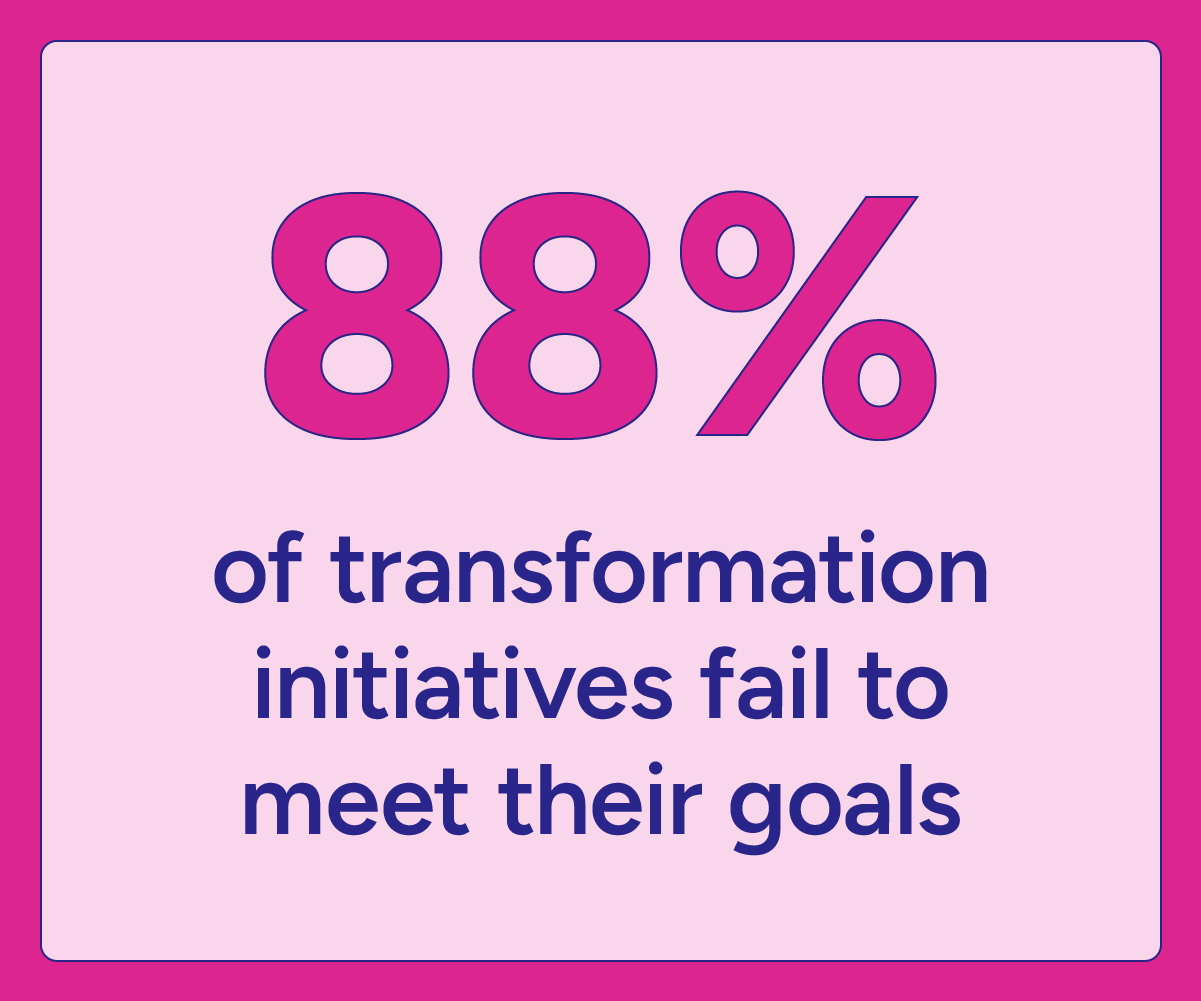Why Change Management is the real ROI driver in Procurement Tech
Technology is only as effective as the people who use it. In procurement, where transformation is often tied to large-scale systems like P2P or ERP, even the best tools can fall flat without proper adoption. That’s where change management comes in. If your digital initiative hasn’t delivered the ROI you expected, chances are the problem wasn’t the platform, it was people-readiness.
This blog breaks down why change management is your most overlooked advantage in tech rollouts, how Fairmarkit’s SOAR framework puts people at the center of transformation, and real-world tactics to build momentum and drive sustained adoption. Whether you’re planning a new implementation or looking to boost engagement with existing tools, this will help you rethink your approach.
The People Problem: Why Tech Projects Often Fall Short
Most organizations don’t fail at digital transformation because of bad tools, they fail because of mismanaged change. According to Bain, EY, and Gartner, up to 88% of transformation initiatives fail to meet their goals, with poor change management frequently cited as the root cause.

It’s not that the technology itself is broken, it’s that people aren’t fully equipped or willing to use it. Whether it’s a lack of top-down alignment, resistance from key user groups, insufficient training, or inadequate communication, these human factors consistently derail progress.
Even with sophisticated platforms, procurement leaders encounter stalled rollouts, low adoption, and missed targets when the people element is an afterthought. And while tools promise automation and efficiency, those benefits only materialize when real users change how they work.
So, if your procurement project is underperforming, start by asking: Did we manage the change, or just install the tech?
Fairmarkit’s SOAR Framework: Change Management in Four Acts
To overcome these blockers, Fairmarkit developed the SOAR Model, a structured, people-first methodology:
- Stakeholder Alignment
Secure early and ongoing buy-in from champions and decision-makers. Use roadshows, pilot testimonials, and hype campaigns to build credibility. - Operational Readiness
Ensure systems, processes, and communication are prepared before rollout. Pre-sale workshops uncover resistance areas and past project “battle wounds,” setting the stage for smoother transitions. - Adoption Enablement
Deliver tailored, role-based training using interactive tools—think short videos, FAQs, peer-led networks, and in-app guidance. - Reinforcement & Results
Keep momentum going post-launch with performance dashboards, gamification, and ongoing feedback loops.
Selling the Change: Tactics That Actually Work
1. Partner with Marketing: Behavior Change = Persuasion
Change management is a sales job. Drawing inspiration from Influence: The Psychology of Persuasion, we apply behavioral science principles to drive buy-in:
- Reciprocity: Offer a quick sourcing win before asking for engagement.
- Social Proof: Share competitor success stories.
- Commitment: Get users to publicly support the initiative early.
- Authority: Rally respected leaders first—others will follow.
- Liking: Build real relationships through informal touchpoints.
- Scarcity: Create a sense of urgency—make users want to be next in line.
2. Create a Rhythm: Visibility Drives Participation
From "Tip of the Week" emails to watch parties and office hours, simple and consistent communication builds habits. One strategy? A visible, centralized enablement calendar that turns change into a weekly rhythm.
3. Hyper-Personalize at Scale with AI
Not all users are the same. Category managers prioritize strategy and savings. Maintenance requesters focus on speed. Marketing cares about creativity and relationships.
Using GenAI tools like Storylane and Loom, teams can create personalized, multi-language demo experiences and comms for each persona—without burning out internal resources.
4. Build a Community, Not Just a Project Plan
Change shouldn’t end at go-live. Fairmarkit encourages teams to build an internal procurement community modeled after software development cycles:
- Gather suggestions (modern suggestion box)
- Prioritize with champions
- Deliver and share learnings through regular events and updates
This flywheel keeps engagement high, surfaces feedback early, and nurtures talent from within.
Reinforcement: The Most Overlooked Phase
Despite best intentions, many teams still fall into the “set it and forget it” trap, treating go-live as the finish line rather than the starting point of real behavioral change. While initial excitement can drive short-term engagement, true transformation only occurs when usage becomes habitual and managers begin managing through the tool, embedding it into daily workflows and decision-making processes.
Achieving this kind of lasting change requires deliberate reinforcement strategies: regular check-ins, transparent reporting, peer spotlights, and consistent communication that keeps the "why" behind the change front and center. It also requires clear ownership, someone (or a team) tasked with sustaining momentum, monitoring adoption metrics, and responding to friction points.
The most successful Fairmarkit customers are those who understand that change doesn’t stick on its own. They show up post-kickoff with a dedicated change strategy, integrate reinforcement into every phase of the rollout, and treat change management not as a phase, but as a continuous discipline that evolves with the business.
Final Thoughts: Change is a Journey, Not a Milestone
As Joël Collin-Demers shared, every individual goes through their own “change journey.” Adoption isn’t a checkbox, it’s a creative, iterative process that requires empathy, planning, and persistence. Technology implementation is just the starting point; what drives real impact is how well the people behind the process are brought along.
So next time you're evaluating a procurement platform, don’t just ask about features, ask how the provider supports your internal transformation. Look for evidence of a clear, proactive change management approach that aligns with your team’s needs. At Fairmarkit, we’ve made that a core part of our rollout strategy, from pre-sale workshops to post-go-live community support, because we know that successful outcomes are rooted in strong adoption.
If a vendor can’t show you how they help your users succeed beyond the install, that’s more than just a gap, it’s a risk.





